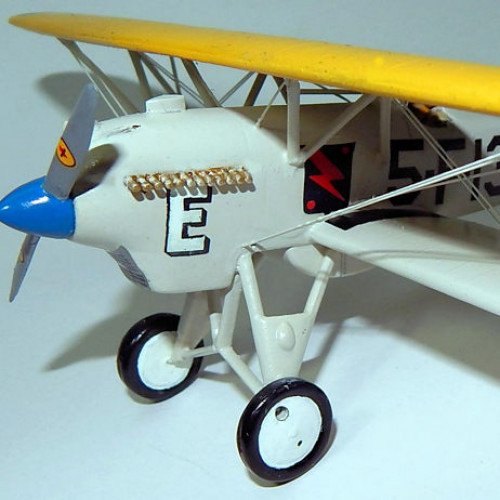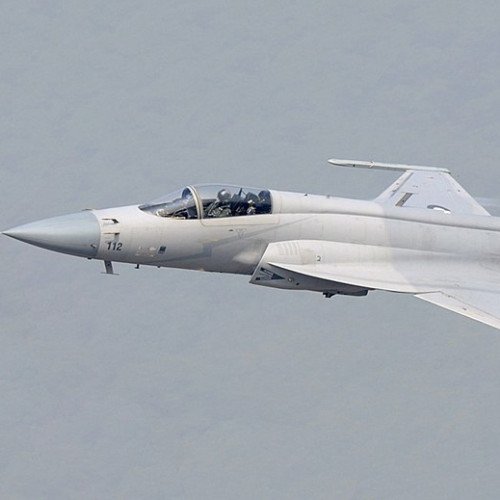Curtiss F6C Hawk vs CAC/PAC JF-17 Thunder

Curtiss F6C Hawk
The Curtiss F6C Hawk was a late 1920s American naval biplane fighter aircraft. It was part of the long line of Curtiss Hawk airplanes built by the Curtiss Aeroplane and Motor Company for the American military. Originally designed for land-based use, the Model 34C was virtually identical to the P-1 Hawk in United States Army Air Corps service. The United States Navy ordered nine, but starting with the sixth example, they were strengthened for carrier-borne operations and redesignated Model 34D. Flown from the carriers Langley and Lexington from 1927–30, most of the later variants passed to Marine fighter-bomber units, while a few were flown for a time as twin-float seaplanes.
Statistics for this Xoptio

CAC/PAC JF-17 Thunder
The PAC JF-17 Thunder (Urdu: جے ایف-17 گرج), or CAC FC-1 Xiaolong (pinyin: Xiāo Lóng; lit. 'Fierce Dragon'), is a low cost, lightweight, single-engine, multi-role combat aircraft developed jointly by the Pakistan Aeronautical Complex (PAC) and the Chengdu Aircraft Corporation (CAC) of China. It was designed to replace the A-5C, F-7P/PG, Mirage III, and Mirage V combat aircraft in the Pakistan Air Force. The JF-17 can be used for multiple roles, including interception, ground attack, anti-ship, and aerial reconnaissance. Its designation "JF-17" by Pakistan is short for "Joint Fighter-17", while the designation and name "FC-1 Xiaolong" by China means "Fighter China-1 Fierce Dragon". The JF-17 can deploy diverse ordnance, including air-to-air and air-to-surface missiles, and a 23 mm GSh-23-2 twin-barrel autocannon. Powered by a Guizhou WS-13 or Klimov RD-93 afterburning turbofan, it has a top speed of Mach 1.6. The JF-17 is to become the backbone of the Pakistan Air Force (PAF), complementing the General Dynamics F-16 Fighting Falcon at half the cost. The PAF inducted its first JF-17 squadron in February 2010. In 2015 Pakistan produced 16 JF-17s. As of 2016, Pakistan is believed to have the capacity to produce 25 JF-17 per year. 58% of the airframe is Pakistani and 42% Chinese/Russian-origin. As of December 2016 Pakistan Aeronautical Complex has manufactured 70 jets in the country for use by the Pakistan Air Force of the Block 1 type, and 33 jets of the Block 2 type.In 2017, The Pakistan Air Force inducted a twin-seater version known as the JF-17B for both enhanced operational capability and training. Preparations for a more advanced and technologically sophisticated block III version of the aircraft are underway and the AESA radar, KLJ-7A, has been developed, which can track 15 targets and engage 4 targets simultaneously.Since its induction in 2011, the JF-17 Thunder has accumulated 19,000 hours of operational flight. The JF-17 has seen active military service as it is used by the Pakistan Air Force to bomb militant positions in North Waziristan, using both unguided munitions and guided missiles for precision strike capability.The JF-17 was also reported to have been used during the 2019 Jammu and Kashmir airstrikes against Indian Aircraft.